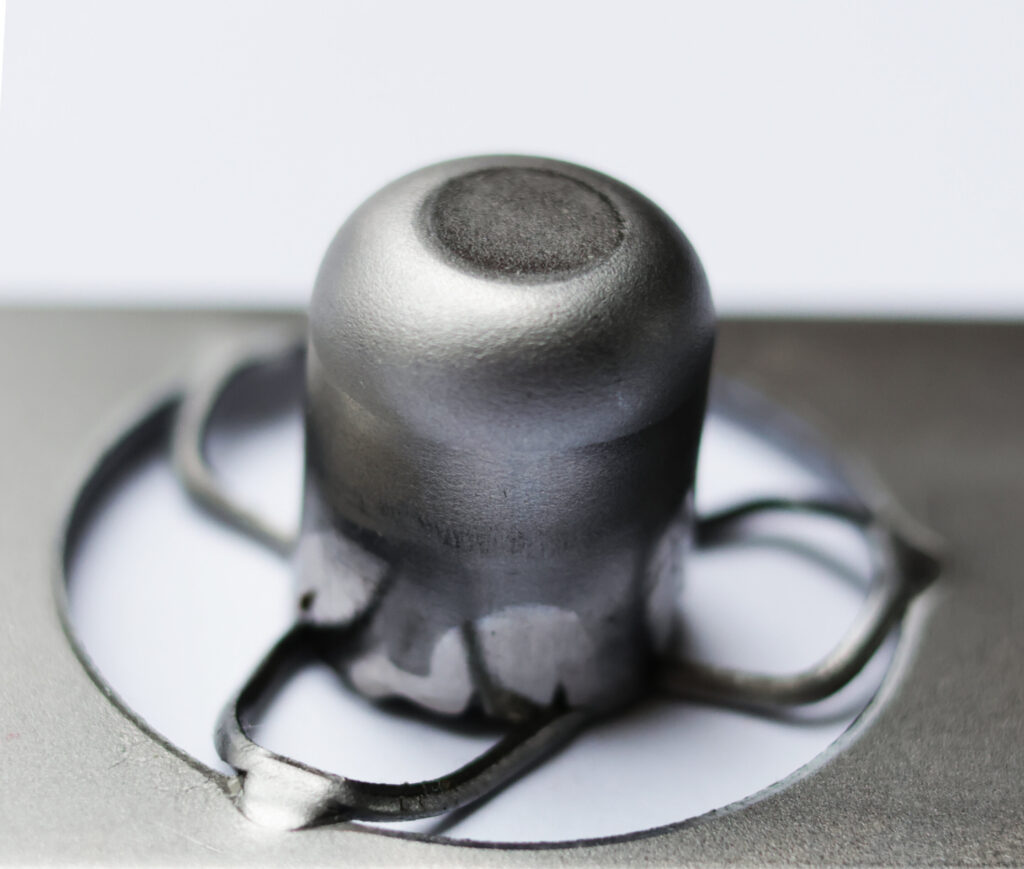by Andreas Hemmerle, Fraunhofer-Institut für Werkzeugmaschinen und Umformtechnik IWU
You can find them in many household appliances, building technology, and countless pipe and hydraulic lines: small, cylindrical parts manufactured through deep drawing processes. The material is under strain during shaping. Potential consequences are unwanted thinning, surface damage, or cracks.
The solution is ultrasonic vibrations—these reduce friction significantly within the material and in contact with the tools. In the VibroDraw process, Fraunhofer IWU, in collaboration with MARK Metallwarenfabrik GmbH and DEVAD GmbH, has successfully integrated ultrasonic vibrations into industrially relevant deep drawing processes with cycle rates of up to 500 strokes per minute.
Ultrasound can reduce friction in deep drawing and thus protect tools and materials. The energy-saving potential resulting from lower forces is something manufacturers of pipes and fittings (connection materials) would also like to utilize. However, it was only the team led by M.Sc. Martin Mädlow that managed to control the typical sudden stresses in industrial forming processes. Previously, effective use of ultrasound was only possible in nearly static laboratory setups.
At least 20% less friction
For vibration excitation, active tool parts such as the punch and die, plus the blank holder that keeps the sheet metal in the desired position during forming, are all viable. The researchers chose the die, as it has the largest share of relative movement during forming. “The die offers the most potential. We’ve already achieved a 20% reduction in friction, but we still see further potential,” emphasizes Mädlow.
Regulated by the process force transmitted through the workpiece, forming usually occurs in several stages. Thanks to less friction, it is possible to deep draw much further in a single stage without damaging the material. For example, two forming steps are sufficient instead of three conventional ones. Reduced friction also means less heat input, which allows for higher stroke frequencies, and longer tool lifespans, and prevents the coking of lubricants.

Fraunhofer IWU is advancing its activities to transfer this technology to industry swiftly. Currently, the focus is on ultrasonic deep drawing of cell housings used in high-voltage batteries for electric vehicles. The goal is larger cell formats that make better use of space and provide higher ranges thanks to increased energy density. The patent application for VibroDraw (EPA WO2025/012830 A1) has already been filed.
Provided by
Fraunhofer-Institut für Werkzeugmaschinen und Umformtechnik IWU
Citation:
Ultrasonic deep drawing cuts friction by 20%, extends tool lifespan (2025, February 20)
retrieved 20 February 2025
from https://techxplore.com/news/2025-02-ultrasonic-deep-friction-tool-lifespan.html
This document is subject to copyright. Apart from any fair dealing for the purpose of private study or research, no
part may be reproduced without the written permission. The content is provided for information purposes only.

